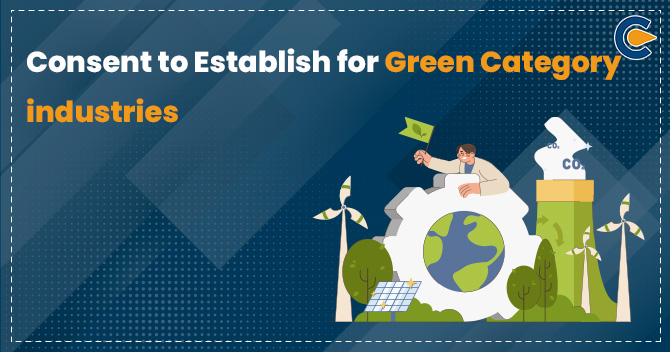A carbon credit is a general term for any permit or tradable certificate manifesting the right to emit one tonne of carbon dioxide (CO2) or the equivalent amount of different GHGs i.e. Greenhouse gases. Carbon markets and carbon credit are a component of national & international endeavors to undermine the growth in the concentration of greenhouse gases. Carbon trading refers to an application of an emission trading approach. Greenhouse gas emissions are limited, and then the market is utilized to allocate the emission among the group of regulated sources.
The Carbon credit aims at reducing the emission of GHGs into the environment. Please note that a carbon credit is equivalent to 1 tonne of Co2. As per the Environmental Defense Fund, it is equivalent to a 2,400-mile drive in terms Co2 emissions.
Companies or countries are allotted a specified number of credits & might trade them to aid balance overall global emissions. The goal is to lower the number of credits over time, therefore promoting entities to identify viable ways to cut down the GHGs emissions.
The Carbon credits were formulated as a market-oriented mechanism to curtail the emission of GHGs. Entities get a set number of credits, which decrease over time. They can sell any excess to another entity. Thus, “cap-and-trade” serves as an incentive to reduce emissions.
The carbon credit is a crucial part of a “cap-and-trade” program. The pollution emitting entities are awarded credits that permit them to continue to emit pollution to a prescribed limit. This limit is decreased over time. Meanwhile, the companies may sell any overflow credits to another entity that needs them. Private entities are therefore doubly incentivized to minimize GHGs emissions.
India’s Stance on Curtailing the Greenhouse Gas Emissions
- When the GHEs were increasingly endangering life, a protocol was launched in 1997 in Kyoto, Japan, to mandate the polluted countries minimize the Co2 as well GHG emissions.
- The protocol was synced with the UN framework convention on Climate Change (UNFCCC), which aims to lower the concentration of GHG emissions in an affordable manner. This forced the countries to go green and minimize carbon emissions across all the sectors.
- But this target is somewhat hard to achieve. This is where cutting edge financing solutions could play a game-changing role. Globally, creating the carbon market has facilitated a supplementary income source for clean energy projects.
- One of the highly effective platforms for generating funds for climate projects has been the Clean Development Mechanism (CDM). Nations that adopted the Kyoto Protocol were exposed to the max. Emission levels for specific timelines and took part in carbon credit trading.
- India is on a roadmap to decarbonize its industrial sector and meet its contribution commitments. AGNIi Mission, under the Principal Scientific Adviser to the GOI, seeks issue statements and focus areas from the businesses fraternity of the nation.
- Most energy organizations have shown their urge to minimize the ever-increasing carbon emissions. But, many of such organizations are asset-heavy and have a pretty long investment cycle. Henceforth, these companies are unable to decarbonize themselves at the expected levels.
- While the market for decarbonization in India seems to be large, it has only limited alternatives. Conventional forms of sustainable finance do not cover these.
- Few partner companies have manifested their interest in investing in technologies dealing with these and offset carbon credits produced because of their fundamental business. Private entities are incentivized to minimize the emission. First, they will be subjected to a monetary fine if they surpass the given limit. Second, they can earn money by sparing and reselling some of their emissions allowances.
Prominent Carbon Projects in India Making a Significant Contribution in Curtailing GHGs Emissions
Jindal Vijaynagar Steel
Jindal Vijaynagar Steel has confirmed that in the upcoming decade, it will be ready to sell out around $225 million worth of saved carbon.
This assurance has been made in light of their facility that uses Corex furnace technology. The said technology is capable of mitigating around 15 MT of carbon emissions.
Powerguda in Andhra Pradesh
The village in AP was selling around 150 tonnes equivalent of saved co2 credits. The company confirmed that it had saved 147 MT of CO2. This was achieved by extracting bio-diesel from more than 4500 Pongamia trees in their village.
Handia Forest in Madhya Pradesh
In MP, it is projected that around 100 financially aggrieved villages would collectively earn at least US$300,000/year from carbon payments by restoring more than 10,000 hectares of community forests.
Mechanism of Securing Carbon Credit in India
- The paradigm of carbon credit trading seeks to incentivize nations to minimize their GHG emissions, as it rewards those nations which fulfil their targets and facilitates financial incentives to others to do so as promptly as possible.
- Surplus credits can be sold in the global market. Carbon credits are open to entities engaged in developing renewable energy projects that counterbalance the utilization of fossil fuels.
- Developed nations have to invest nearly $ 500 for per tonne reduction in co2, against $10-$25 to be spent by developing nations.
- On the other hand, they are obligated to sell surplus credits to developed nations. This is where the concept of trading comes into the picture. Overseas entities unable to meet norms can buy such credit via trading.
- Therefore, the roadmap has been set for Credit Emission Reduction (CER[1]) trade to thrive. India is the largest beneficiary, claiming around 31 per cent of the overall global carbon trade via Clean Development Mechanism (CDM), which is projected to rake in at least $5-10bn with time.
Activities eligible for Carbon Credits include;
- Afforestation & reforestation Projects
- Agri-biomass oriented Energy Projects
- Bio-methanation: Power Generation route: Organic Fertilizer
- Energy Generation by controlled combustion
- Wastewater Projects: Methane Capture: Methane Capture & Flaring: Organic Fertiliser
- Wastewater cum solid waste treatment; methane capture: power generation
- Avoidance of methane and no2 emission from paddy fields
- Household-level biogas plants treating Kitchen, organic farmyard, and biowastes
- Solar Energy
- Special Manure producing method
Bottom-line
Though carbon offsets are often manifested as tools to minimize emissions, they do not actually serve the purposes. They radically transfer reductions to where it is affordable to make them, which generally implies a shift from developed to underdeveloped nations. GHGs continue to be made at single vicinity on the concept that an equivalent amount of saving will come to life elsewhere. Besides, tapping into the carbon market seeks tedious and costly paperwork, probing and verification.
With high transactions & time costs, the potential for downfall has prevented most small projects from accessing this complex market. Owing to these obstacles, carbon finance is preferably better suited for bigger projects such as geothermal facilities, wind farms, and waste-to-energy plants that generate a massive no. offsets and are easier to probe.
Read our Article:An Overview on CPCB’s Pollution Control Measures and Action Plan











